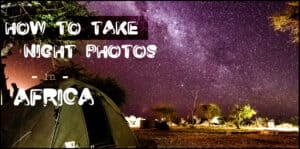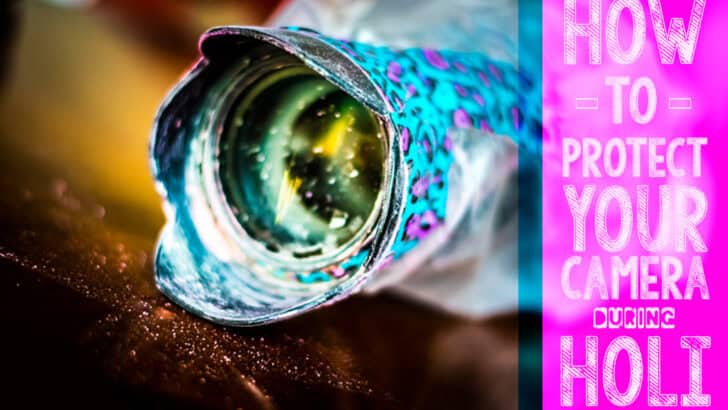The colors of the Holi festival or a color run are beautiful, and to truly capture them, you’re going to want a good camera. As beautiful as the powered dye may be, it can be deadly to your camera. The fine, brightly colored dye can wreak havoc on your gear.
In this post, I will show you how to protect your camera during a Holi festival or a color run properly. After returning back to my hotel, I saw several tour buses come back with some nice cameras that looked trashed.
I saw one tourist that had a Nikon D4 ($6,000 production-grade camera) with a plastic grocery bag loosely hanging around it and neon-colored powder everywhere. I wish I had money to throw away like that, but unfortunately, I don’t.
So, I must protect my camera when I go to Holi or other events. Here’s how I successfully protected my camera and lens during the color festival.
How To Get Indian Visa On Arrival – Step by Step Guide
How to Protect Your DSLR Camera During the Holi Festival or a Color Run
There are a few key areas that need to be protected from the powder. For me, the sensor is my biggest concern. If I get power inside the sensor area, it could kill the camera or at least require extensive cleaning. Next, would be to completely seal all of the places the dye could get into my lens. Finally, I needed to still be able to take some good shots.
*When looking for the best price and biggest selection of hotels check prices on Booking.com, we’ve found they are the best option and have a great cancelation policy.*
Step 1.) Protect the Sensor
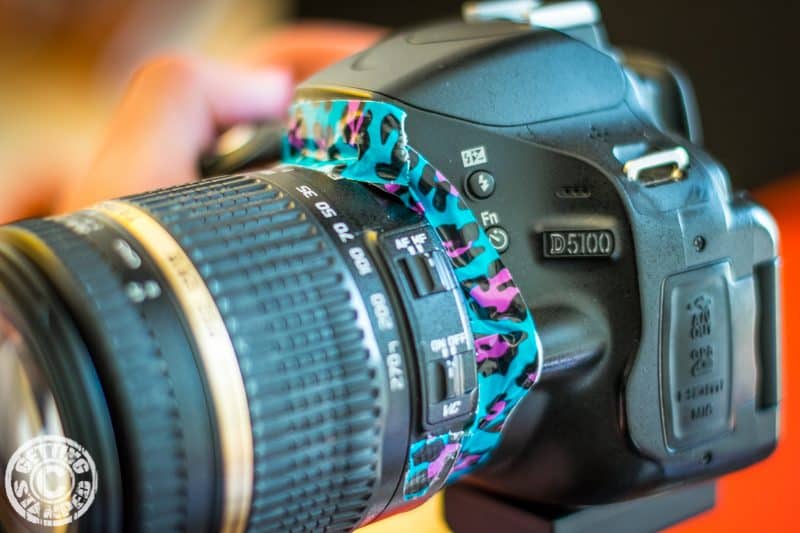
Most common lenses have somewhat of a gasket to make the sensor area airtight. However, after many lens changes and over time, that seal can let so air and powder in, and others may not have them at all. The first step to protecting your camera during Holi or a color run is to seal the lens joint with tape. I used duct tape because it was originally designed to seal air ducts, and it’s airtight, it’s duct tape, not duck tape.
Besides being good enough for MacGyver, it also comes off clean without leaving lots of tape residue when you are done with Holi or a color run. Be Careful not to tape onto the zoom grip of the lens using a zoom lens. You may need a few strips of tape around where the pop-up flash sticks out over the lens. Be sure to keep any switches, such as your AF and vibration control, open during all taping.
Step 2.) Add Memory and Batteries
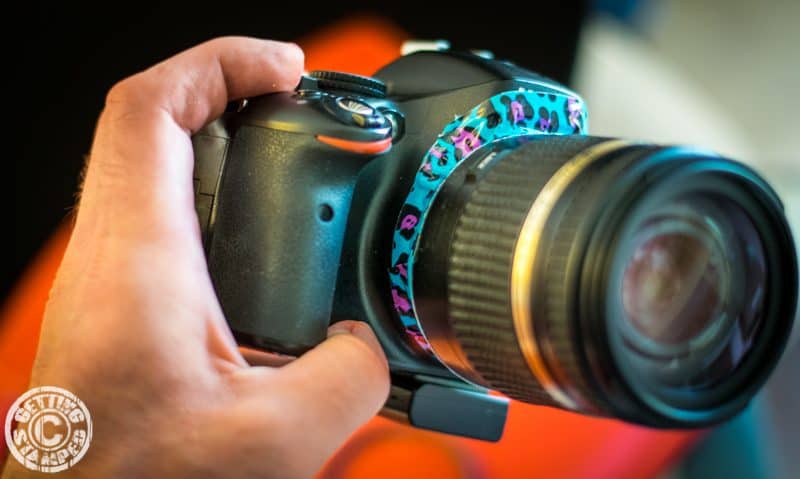
The idea behind this system is to not open it until the Holi festival or the color run is done, so you are going to need enough memory and battery life. If you have a double battery bottom, put it on now.
If not, tape a second battery onto the bottom of your camera. Two loops of duct tape should hold it in place. Also, insert the largest memory card you have in your camera’s slot. Make sure it’s a fast card if you plan to do a lot of burst shooting.
This is especially important for the Holi festival. During Holi, there is nowhere to go to safely open your camera bag to change cards or anything, it’s a war zone. During a color run, you should be able to find a safe spot, but you also don’t want to miss a shot either.
Step 3.) Seal the Camera Body
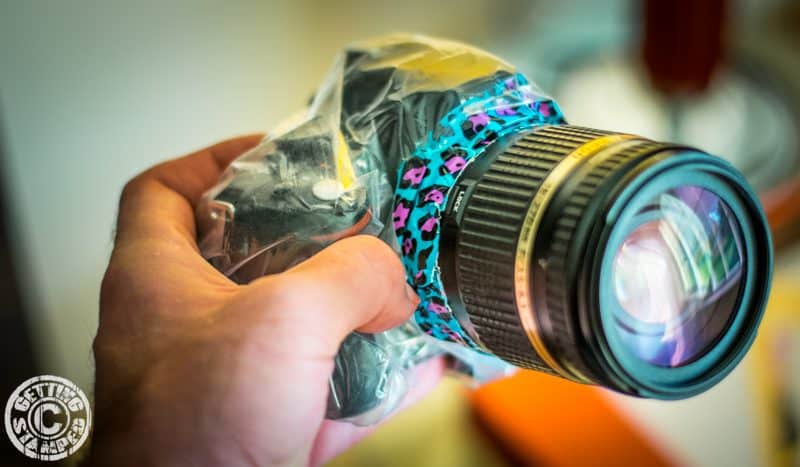
I used a double bag for extra protection for my camera body. This may have been excessive, but I wanted to be sure to keep the body powder-free. Using a large ziplock bag, one gallon or equivalent, I cut the bag short, removing the zip and about half the bag.
Place your camera in the bag with the viewfinder at the bottom of the bag. Cut the bag to fit just the body of the camera, leaving a little slack to allow the buttons and thumb wheel to be adjusted. Take duct tape again and tape the bag around the base of the lens. Squeeze the bag after you are done taping to ensure it’s airtight or near airtight.
Step 4.) Seal the Lens
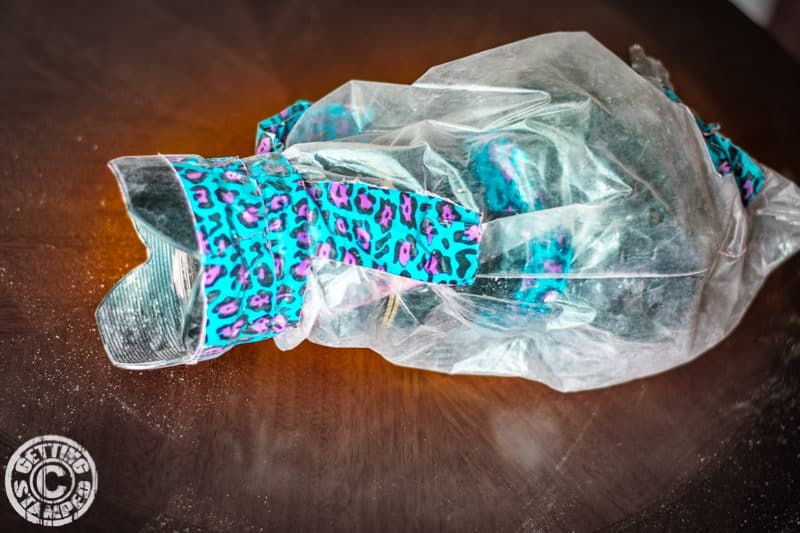
For me, this was the part I was most concerned about because I had trashed a lens before getting stuck in a sandstorm in the desert of Namibia. Powders and sand can get into focus rings and break your AF. They can also sneak into the gaps around the zoom mechanisms and get inside the lens.
Trust me, getting a lens fixed is nothing but a headache. Nobody but the manufacturer will touch them, and that’s next to impossible to get done on the road.
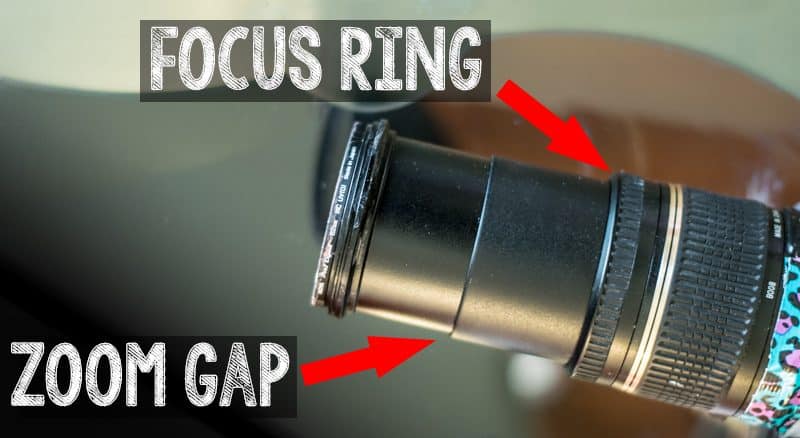
To properly protect your lens during the Holi festival or a color run, you need to completely seal the lens. I did this using a UV filter, duct tape, and a second ziplock bag. Screw the UV filter onto the lens tightly and then place the camera with lens attached into the bag with a viewfinder at the bottom. Trim the bag to loosely fit all the way up to the UV filter. Use thin strips of duct tape to seal the bag to the UV filter. I had to cut the sides of the bag to fit the much narrower UV filter. After cutting seal the bag with more tape.
Step 5.) Add the Lens Hood
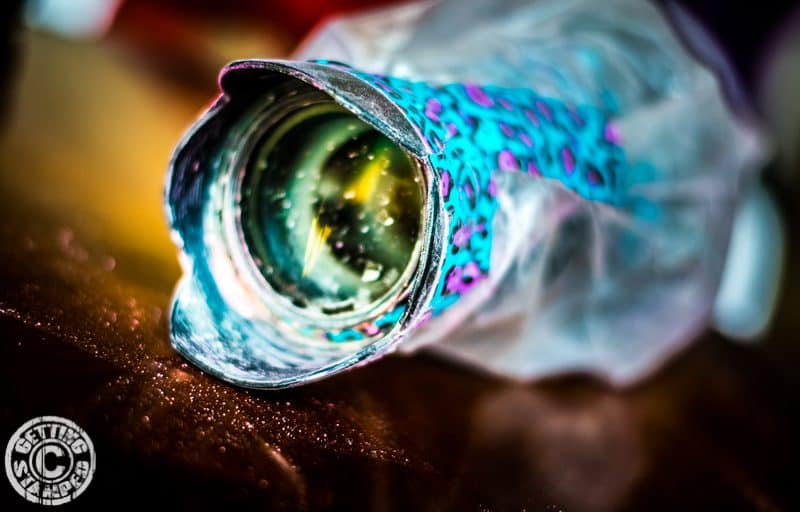
After taping the UV filter to the bag, your lens hood will probably not fit in its groove anymore, but since I was going to be shooting outdoors at the Holi festival, I needed it. I simply used more duct tape to secure it to the outside of the tape used to seal the UV filter.
If you aren’t too handy there are bags that do this for you available for purchase.
You can purchase a waterproof bag pouch from Amazon for under $40, if you don’t trust your handyman skills this would be a great option. At the time of writing this, the waterproof bag was on sale for $25.99, not a bad thing to have as part of your camera gear anyways.
Additional Accessory Tips
- A cheap Lens Pen – Using the lens pen quickly cleared my UV filter without having to remove it, but now it has pink dye in it, and I don’t want to use it again. So buy a cheap ‘disposable’ lens pen.
- Extra Duct Tape – Take some extra duct tape and wrap it around the lens pen. In case you need to get into your bags to protect the camera, you can reseal it. Wrapping the tape around the lens pen saves you from carrying around the entire roll.
- A Wrist Strap or Rain Sleeve – Once in the bags, you need some way to keep from dropping the camera and attaching it to yourself. I used a rain sleeve that had a built-in system to hook to a chest strap. The rain sleeve was an extra layer of protection, but with the bags, it wasn’t necessary and got in the way somewhat. Next time I think I would use a wrist strap or the standard neck strap attached to the camera and just seal where the strap comes through with some duct tape.
What Worked Well
Overall it worked well – The bags, filter, and tape protected my camera very well. There were no signs of power inside the bags. Making the camera airtight also helped for the Holi festival because it was more than powder; buckets of dyed water were also thrown.
Use Cheap UV filters – They are going to be pretty trashed by the end of the day. Just use a cheap UV filter and toss it after the Holi festival or color run. You can get UV Filters on Amazon for just a couple of dollars.
What I Would Do Different Next Time
Keep the Viewfinder Clear – Between the powder in the air, in my eyes, and looking through two bags on the viewfinder I had a hard time seeing what I was shooting clearly, especially for critical focus. Next time I might cut a hole for the eyepiece and tape heavily around it. It would put the camera at more risk, but seeing what you are shooting better might be worth it. I haven’t tried this so try it with caution. I ended up cutting the bag open near the end of the day when I was on a rooftop to get some shots when I was in a safe place. I then used the extra tape I brought to reseal my bags when we headed back into the festival.
Keep the Bag and Tape Loose Around Zoom Mechanism – I had it too tight and wasn’t able to zoom all the way out. Also, if the bags are too tight it can affect the focus rings.
Consider 2 UV filters – I originally bought two UV filters to add a second layer of protection. I was planning on having a second one on top of the taped one so I could remove it and rinse it off when it became too covered. It might be overkill, but the only thing it might hurt is a little less light hitting your sensor. I ended up not using the second one and it was fine. If you do use two test it out before and make sure you can’t see the outer filter causing some vignetting.
Test it the Day Before – I learned a lot just from doing it once, but I wished I would have tried it out earlier to see a few of these flaws. Make sure you can do everything you will need to do. Plus, keep in mind you will be covered in powder from the Holi festival or color run at the time.
See my Photos from Holi
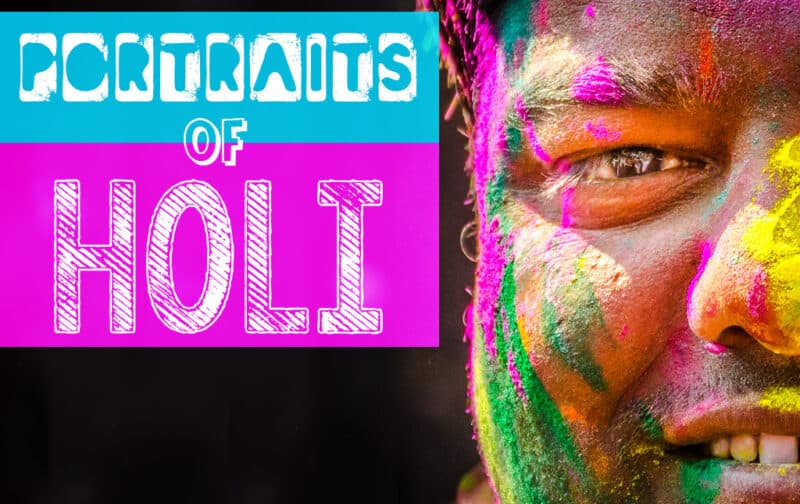
More Photography Tips:
